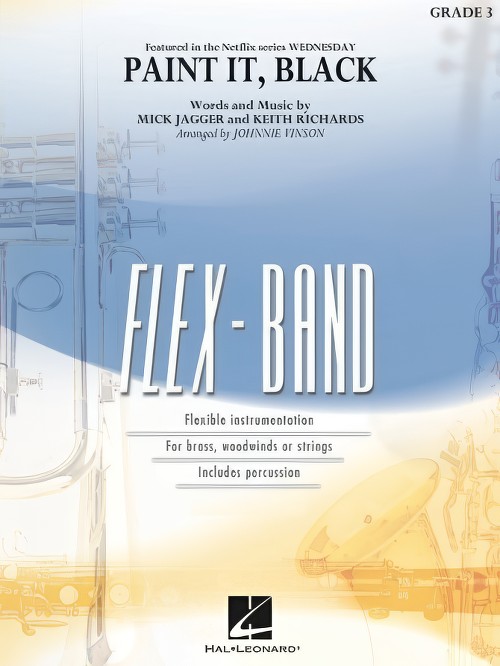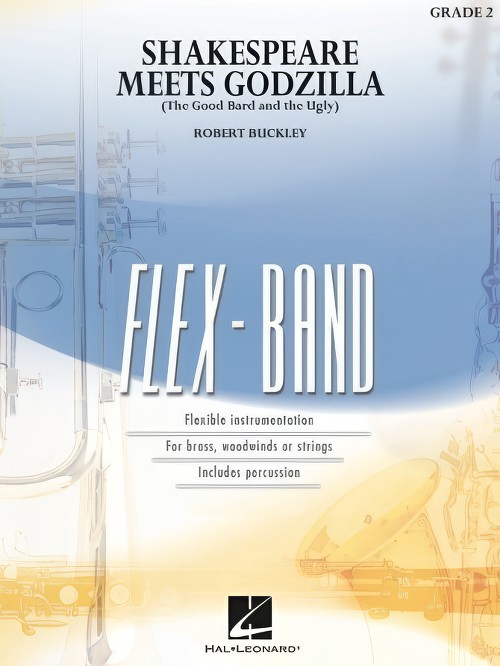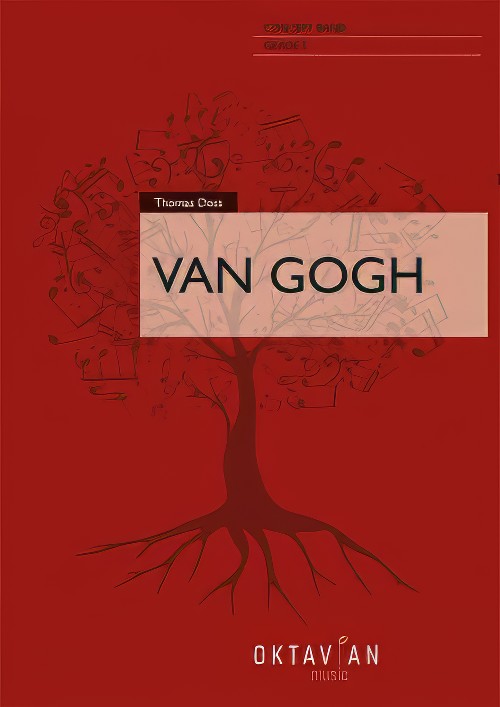Results
-
£144.99
Vents Catalans - Ferrer Ferran
Vents Catalans (Catalan Winds) is a symphonic fantasy which, while it does no directly reference any melody or song from Catalonian folk music, still manages to convey all the life, beauty and energy of this charming region in southern Spain. After a triumphant and majestic introduction, reminiscent of folksongs and lively dances, the mood calms down with an elegant, yet playful, melody, followed by the Sardana, the traditional Catalonian dance par excellence.
Estimated dispatch 7-14 working days
-
 £154.99
£154.99Red Dragon - Ferrer Ferran
The dragon is a mystical monster that plays a prominent role in legends from around the world and it still maintains its timeless hold on humanity. From a destructive force in the west to a messenger sent from the gods in the east, dragons have always been a force of nature. We now invite you to step into the dark and mysterious universe of the Red Dragon, guardian of untold treasures!
Estimated dispatch 7-14 working days
-
 £109.99
£109.99Grnemeyer! - Herbert Grönemeyer
The German singer and actor Herbert Grnemeyer has remained faithful to his own style since the beginning of his career in the eighties, yet still managed to further develop his craft and himself, all the while remaining successful. His albums sell well, and his concerts,especially in Germany, are frequently sold out. Wolfgang Wssner chose four diverse songs from Grnemeyer's extensive repertoire (Mnner, Mensch, Flugzeuge im Bauch and Mambo), creating a medley that remains exciting to the very end.
Estimated dispatch 7-14 working days
-
 £134.99
£134.99Gulliver's Travels - Bert Appermont
The book Gullivers Travels (1726) by author Jonathan Swift formed the provocation for writing this composition. Even though this composition isnt a literal representation of the original story, a number of elements were still retained. The shipsdoctor Gulliver finds himself in 4 (fictive) areas, each with their own inhabitants and customs. Each part of this suite also received the name of one of these areas:I. Lilliput The enterprising Lilliputians are represented by a playful, common themein the first part.II. BrobdingnagIn the land of "Brobdingnag" Gulliver is carried off by gigantic giants, which you hear approaching with the sounds of the bassinstruments. The same theme is constantly repeated and quickened in order to increase thetension.III. LaputaLaputa is an island that floats in the air; its inhabitants are strange people with slanting heads. The dreamy, special atmosphere is especially well conveyed here.IV. The HouyhnhnmsFinally Gulliver finds himself in the land of theHouyhnhnms, where intelligent and noble horses rule over the primitive, undeveloped people (yahoos). The trumpets in the brilliant opening express the galloping horses; the gallant theme that follows (horns and trombones) symbolises the primitiveyahoos. The whole composition ends with a big finale.I intentionally tried to limit the degree of difficulty of Gullivers Travels. Despite this I think that this work can appeal to many orchestras due to the colourful orchestration (cues areprovided where needed), the simple and clear theme and the highly imaginative breeding ground of a beautiful story around which this composition is built."
Estimated dispatch 7-14 working days
-
 £50.50
£50.50Bringer of War - Brian Balmages
Inspired byThe Planetsby Gustav Holst, this original piece pays homage to the first movement, Mars. Using only six notes in all instruments, the music still has a powerful quality that dares the listener to embrace the bold, majestic melodies and rhythmic ostinato. A unique original that invites further study of a master composer!
Estimated dispatch 7-14 working days
-
 £53.50
£53.50Fanfare For The Common Man (Arr. Robert Longfield) - Aaron Copland
Arguably the most famous fanfare ever written! Now available in a version written with standard wind band instrumentation and playable by most bands. The key has been lowered and technical demands have been modified, however, this superb adaptation still maintains all the power and majesty of the original. Dur: 3:00 (Grade 3)
Estimated dispatch 7-14 working days
-
 £60.00
£60.00Paint It, Black (Flexible Ensemble - Score and Parts) - Jagger & Richards - Vinson, Johnnie
Here is a flex version of Robert's popular work for full band which colourfully depicts the madness and mayhem as musical worlds collide. An inventive mash-up of Renaissance and classic horror music, Shakespeare Meets Godzilla is entertaining but still with plenty of musical depth for teaching.Duration: 3.30
Estimated dispatch 7-14 working days
-
 £57.50
£57.50Shakespeare Meets Godzilla (The Good Bard and the Ugly) (Flexible Ensemble - Score and Parts) - Buckley, Robert
Here is a flex version of Robert's popular work for full band which colourfully depicts the madness and mayhem as musical worlds collide. An inventive mash-up of Renaissance and classic horror music, Shakespeare Meets Godzilla is entertaining but still with plenty of musical depth for teaching.Duration: 3.30
Estimated dispatch 7-14 working days
-
 £119.20
£119.20Sinfonisches Praludium (Concert Band - Score and Parts) - Bruckner, Anton - Doss, Thomas
The Symphonic Prelude in C minor is an orchestral composition from the circle of the Austrian composer Anton Bruckner. The unearthing of this work, discovered shortly after World War II, has created confusion, leading to a second, reduced version being attributed to Gustav Mahler, a theory which still holds sway in musical circles today, although there is a high probability that the original composition is indeed by Bruckner himself. Rudolf Krzyzanowski (1895-1911), a pupil of Bruckner, transcribed the score in 1876. The 43-page manuscript bears the inscription Rudolf Krzyzanowski cop. 1876 on the first page; while on the last page is written in blue pencil: By Anton Bruckner. Thomas Doss used a facsimile of this autograph copy as the basic of his instrumentation of the prelude for symphonic wind orchestra.Duration: 6.15
Estimated dispatch 7-14 working days
-
 £279.99
£279.99Van Gogh (Concert Band - Score and Parts) - Doss, Thomas
This composition is not a work inspired by the life of the famous painter, but rather an attempt at a pictorial immersion into his world. In addition to Van Gogh's character and tragic life, the technique he employed to create his works, the bright colours of his paintings and his view of nature served as inspiration for this musical work. Point by point, stroke by stroke, Van Gogh brought his own world to life on canvas.On the life of Van Gogh: The Dutch artist Vincent van Gogh was one of the most important pioneers of Modernism, despite being relatively unknown during his own lifetime. As an artist, he chose a life of poverty and seclusion. From today's perspective, his important woks were created from 1880 onwards, when he had already more or less succumbed to madness. While his earlier works could still be classed as contemporary, he matured into a pioneer of Expressionism with his later work indicating an increasing self-awareness. He was just 37 years old when he died but he created over 750 paintings and 1600 drawings in the last ten years of his life.The structure of the work:Start: Brushes and Paints: Van Gogh retired to Arles in southern France where he found his artistic home. The colours and flowering gardens of this landscape awakened in him an unbelievably great creative power.A: A Picture Comes into Being: Van Gogh's psychotic episodes and bouts of depression did not stop him from painting wonderful pictures. Hardly anyone recognised his genius during his lifetime, on the contrary, he often felt misunderstood.C: Paris - Arles: In Paris (from 1886), Van Gogh became inspired by the French art scene. His works found few takers, however. He met and befriended the painter Paul Gauguin, but the lack of success made Van Gogh short tempered, and he began to drink. Eventually, he moved from Paris to Arles in the south of France to establish an artists' collective with Gaugin. Within a few weeks, the two got into such a violent argument that Van Gogh attacked his friend with a knife. The friends parted ways and afterwards Van Gogh cut off his right ear. In 1889 he voluntarily admitted himself into a mental hospital at St. Remy, suffering from hallucinations and fearing that he would lose his mind.G: The Starry Night One of his most famous paintings, created in 1898.H: Death and Brotherly Love Vincent van Gogh accepted an invitation to Auver-sur-Oise in 1890. This was one of his most intensive creative periods. He also went there for treatment, but his mental state hardly improved. After an extended walk, he injured himself fatally with a pistol under mysterious circumstances. Not even to his beloved brother Theo, who had supported him all his life, did he reveal on his deathbed how the accident had occurred.J: Art Market Today, Van Gogh's paintings are among the most expensive paintings on the art market. How ironic, given that he could hardly sell a painting during his lifetime. "I put my heart and soul into my work and lost my mind in the process." (Vincent van Gogh)Duration: 13.15
Estimated dispatch 7-14 working days
